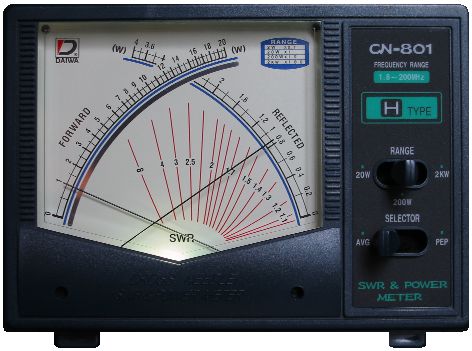Working of SWR Meters
This article focuses on the concept of Standing Wave Ratio, its measurement using SWR meters, directional swr meter, Voltage Standing wave ratio (vswr), Swr bridge circuit, applications and problems with an SWR meter.
SWR meters are used to measure and denote the standing wave ratio in a communication line. That is, the meter will denote the exact mismatch between the transmission line and the load, thus helping to know the degree of effectiveness of the impedance matching efforts.
Standing Wave Ratio
To know more about SWR Meter, it is necessary that you understand the basic concept of Standing Wave Ratio [SWR].
In a communication line, Standing Wave Ratio is defined as the ratio between the amplitude of a partial standing wave at antinodes [max] to the amplitude of the adjacent mode [min]. Thus the ratio calculated is also called the voltage ratio or Voltage Standing Wave Ratio [VSWR].
If we get a ratio of 1.5:1, it means that the maximum standing wave amplitude is 1.5 times greater than the minimum standing wave value.
Like Voltage SWR, we can define SWR in terms of Current [ISWR] and Power [PSWR]. PSWR will be the square of VSWR.
SWR is commonly expressed to measure the efficiency of a communication line. The lines also include other cables that pass radio frequency signals, and TV cable signals. It is also used for connecting radio transmitters and receivers with their antennas.
When a transmission line is set, the impedance in the cables will always be out of match. This will cause the radio waves to be reflected back towards the source end of the cable. The SWR meter is used to determine the amount of radio frequency energy that is being reflected back to the transmitter compared to the amount that is being sent out during operation. If the ratio is high, the transmitter will get damaged for sure. The maximum standard rating for a SWR meter where a transmission can withstand is 1.5:1. The ideal rating is 1:1 that is the power reaches the destination and reflects no power back.
Directional SWR Meter
A directional SWR meter is used to measure the magnitude of the transmitted and reflected waves by sensing each one separately, with the help of directional couplers. The circuit diagram of a Directional SWR Meter is shown below.
From the diagram, we can see that the transmitter and antenna are connected through an internal transmission line. The line is also electromagnetically coupled to two directional couplers, which are then connected to the resistors at one end, and diode rectifiers at the other. The resistors help in matching the characteristic impedance of the sense lines. At the same time, the diodes help in converting the magnitudes of the forward and reverse waves to their corresponding DC voltages [FWD and REV]. These DC voltages will then be smoothened with the help of capacitors.
SWR Bridge Circuit
A typical bridge circuit can be constructed for determining the SWR impedance. The test impedance will be increased until the bridge circuit is balanced, that is the test impedance will be equal to the reference impedance. Thus, with the help of a bridge circuit we can know whether a SWR is present or not.
Problems with SWR Meters
- The actual impedance of any load is the reactance and resistance together. But, the SWR meter cannot measure both, instead measures the mismatch. To measure the impedance, more complex radio frequency measuring devices must be used. For the SWR meter readings to be accurate, the device must be matched on to the line impedance.
- Any transmission line will have a certain loss. When this loss occours, the reflected signal will be attenuated when it travels back along the line. Thus, for the SWR meter to be efficient, it must be connected very near to the antenna and further away from the load. The value of SWR will be more when it is nearer to the load.
- When using a passive type SWR meter it is always better to remove the device from the line. As these devices have diodes and other harmonics producing components, intermodulation may occour.



3 Comments
i notice that the directional SWR meter image is differ from the image source. The rev and fwd has been switched places.
image source is already changed it. btw thanks for the info.
Thanx for pointing it out..